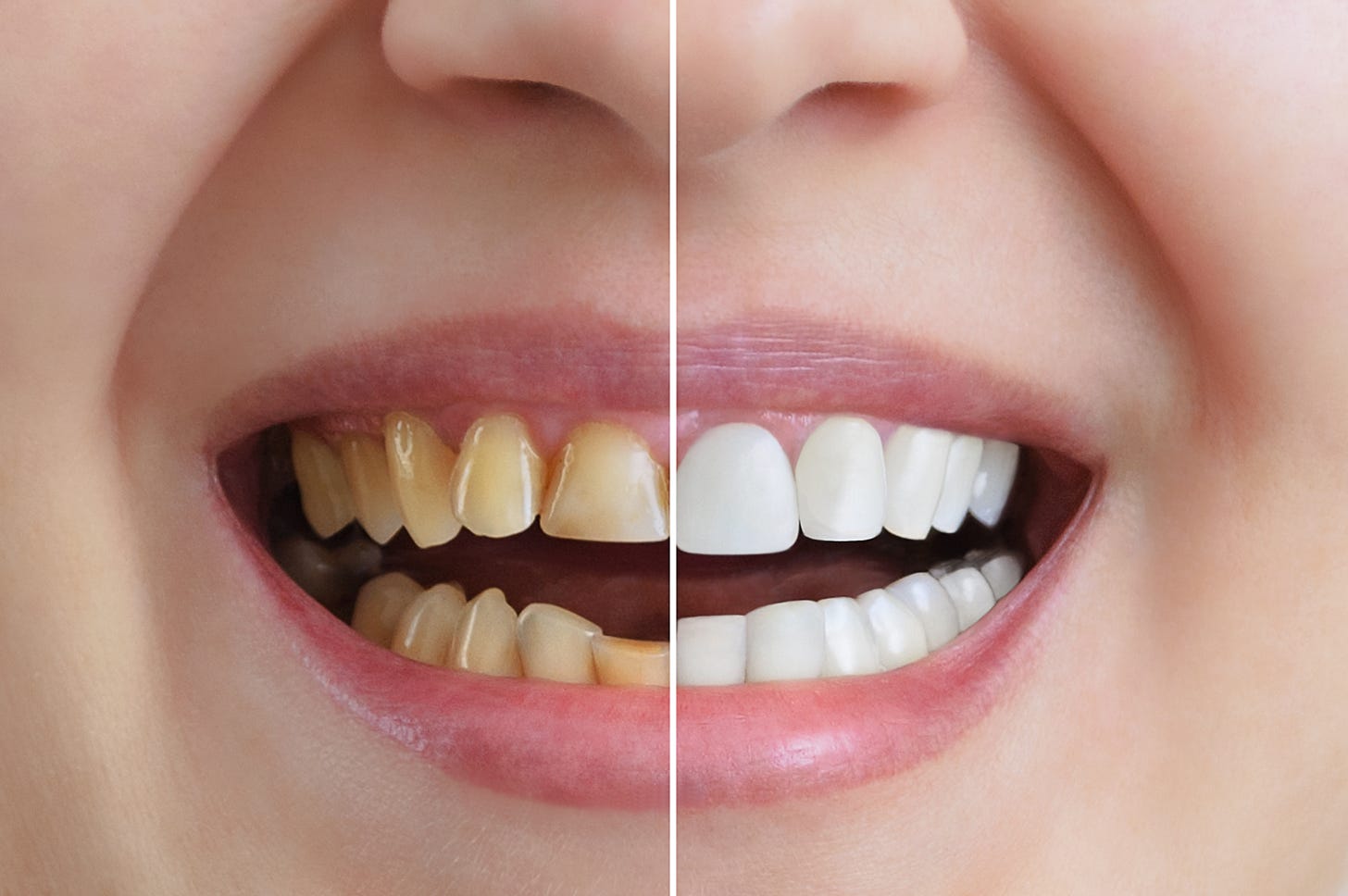How Effective Are Whitening Strips Compared to Gels?
Many people looking to brighten their smiles often ask, how effective are whitening strips compared to gels? Both products are popular over-the-counter solutions for improving the appearance of Teeth Whitening or yellowing teeth, but they work differently and offer varying levels of effectiveness. Understanding the differences in application, ingredients, and results will help you choose the right option for your needs and lifestyle.
What Are Whitening Strips?
Whitening strips are thin, flexible plastic strips coated with a peroxide-based whitening gel. They are designed to stick to the front surfaces of your teeth and stay in place during treatment.
Advantages of whitening strips:
Easy to use and mess-free application
Pre-dosed with the right amount of whitening agent
Designed for daily use over a period of one to two weeks
Ideal for people looking for a low-maintenance option
Often come with flexible wear times (usually 30 minutes daily)
Whitening strips are generally effective for mild to moderate surface stains caused by food, drinks, or smoking.
What Are Whitening Gels?
Whitening gels come in syringe or tube form and are applied using a brush, tray, or custom-fitted mouthguard. They typically contain a higher concentration of peroxide than strips and are more customizable.
Benefits of whitening gels:
Offers stronger and more consistent whitening results
Can be used with dentist-provided trays for even application
Better suited for individuals with darker or deeper stains
Can target specific areas more accurately than strips
Available in both over-the-counter and professional-grade strengths
Whitening gels are considered more powerful and are often used in professional treatments under dental supervision.
Comparing Results: Strips vs Gels
When comparing how effective whitening strips are compared to gels, it’s important to look at expected results, treatment duration, and strength of formulation.
Effectiveness breakdown:
Whitening strips usually show noticeable results after 7–14 days
Whitening gels can provide faster results in as little as 3–5 days depending on concentration
Gels offer more dramatic whitening, especially for yellow or brown stains
Strips may not conform well to crooked teeth, leading to uneven results
Gels, especially in trays, allow full coverage and stronger whitening action
Overall, gels tend to be more effective for comprehensive and long-lasting whitening.
Ease of Use and Comfort:
User experience also plays a role in deciding which whitening method is best for you.
Comparison of user-friendliness:
Whitening strips are quick to apply, require no tools, and are disposable
Whitening gels require careful application and often a tray, which can be uncomfortable for some users
Strips are more portable and discreet for on-the-go use
Gels may cause more tooth sensitivity due to higher peroxide concentration
Strips tend to stay in place better without the bulkiness of trays
For convenience and beginner use, strips are generally easier, though gels offer more customization.
Safety and Potential Side Effects:
Both whitening methods are safe when used correctly, but they do carry some potential side effects.
What to watch for:
Tooth sensitivity is common, especially with gels that contain higher peroxide levels
Gum irritation may occur if whitening agents come in contact with soft tissue
Overuse of either method can damage enamel or lead to uneven whitening
Always follow manufacturer or dentist instructions carefully
Avoid using whitening products too frequently to prevent enamel wear
Consult your dentist before starting treatment, especially if you have sensitive teeth or existing dental work.
Which Option Is Right for You?
Choosing between Teeth Whitening in Dubai strips and gels comes down to your whitening goals, lifestyle, and comfort with application methods.
Best uses for each option:
Choose whitening strips if you want a convenient, affordable solution for mild staining
Opt for whitening gels if you’re looking for faster, stronger results or treating deeper discoloration
Gels are better suited for those comfortable with custom trays and multi-step applications
Strips are ideal for travel, beginners, or those with limited time
Professional guidance is always helpful for maximizing effectiveness and safety
Ultimately, both methods can be effective depending on how they’re used and your specific needs.
Conclusion:
In conclusion, how effective are whitening strips compared to gels depends largely on the type of stains you're treating and how quickly you want results. Whitening gels generally provide more intense and faster whitening due to their higher concentration and full-mouth coverage, while whitening strips offer a more user-friendly approach with decent results for everyday surface stains. Whichever option you choose, consistency and proper usage are key to achieving a brighter, whiter smile safely and effectively.



